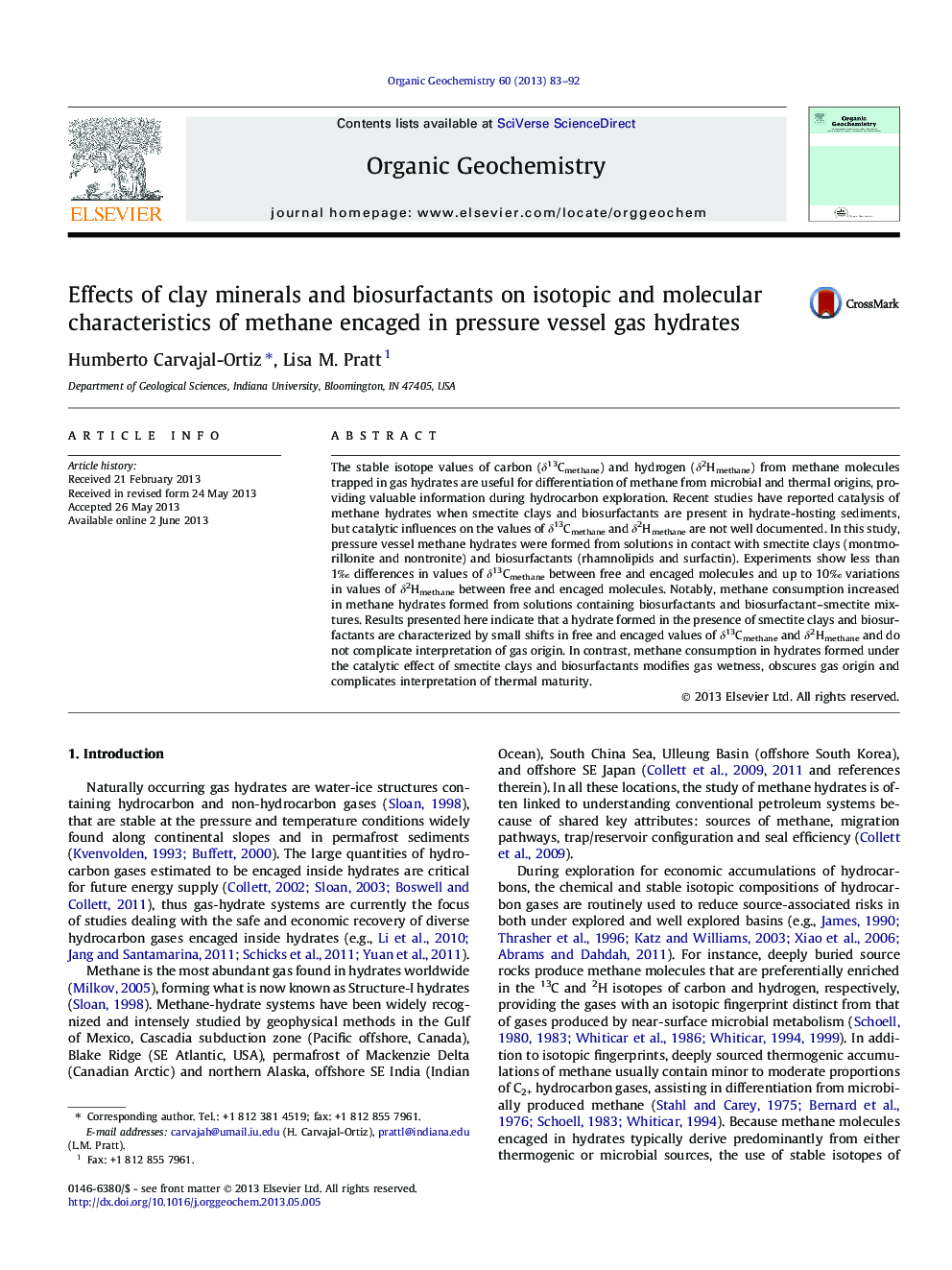| کد مقاله | کد نشریه | سال انتشار | مقاله انگلیسی | نسخه تمام متن |
|---|---|---|---|---|
| 5163188 | 1502301 | 2013 | 10 صفحه PDF | دانلود رایگان |
عنوان انگلیسی مقاله ISI
Effects of clay minerals and biosurfactants on isotopic and molecular characteristics of methane encaged in pressure vessel gas hydrates
ترجمه فارسی عنوان
اثرات مواد معدنی خاکی و بیوسورفکتانت ها بر خصوصیات ایزوتوپ و مولکولی متان در هیدرات ها
دانلود مقاله + سفارش ترجمه
دانلود مقاله ISI انگلیسی
رایگان برای ایرانیان
موضوعات مرتبط
مهندسی و علوم پایه
شیمی
شیمی آلی
چکیده انگلیسی
The stable isotope values of carbon (δ13Cmethane) and hydrogen (δ2Hmethane) from methane molecules trapped in gas hydrates are useful for differentiation of methane from microbial and thermal origins, providing valuable information during hydrocarbon exploration. Recent studies have reported catalysis of methane hydrates when smectite clays and biosurfactants are present in hydrate-hosting sediments, but catalytic influences on the values of δ13Cmethane and δ2Hmethane are not well documented. In this study, pressure vessel methane hydrates were formed from solutions in contact with smectite clays (montmorillonite and nontronite) and biosurfactants (rhamnolipids and surfactin). Experiments show less than 1Ⱐdifferences in values of δ13Cmethane between free and encaged molecules and up to 10Ⱐvariations in values of δ2Hmethane between free and encaged molecules. Notably, methane consumption increased in methane hydrates formed from solutions containing biosurfactants and biosurfactant-smectite mixtures. Results presented here indicate that a hydrate formed in the presence of smectite clays and biosurfactants are characterized by small shifts in free and encaged values of δ13Cmethane and δ2Hmethane and do not complicate interpretation of gas origin. In contrast, methane consumption in hydrates formed under the catalytic effect of smectite clays and biosurfactants modifies gas wetness, obscures gas origin and complicates interpretation of thermal maturity.
ناشر
Database: Elsevier - ScienceDirect (ساینس دایرکت)
Journal: Organic Geochemistry - Volume 60, July 2013, Pages 83-92
Journal: Organic Geochemistry - Volume 60, July 2013, Pages 83-92
نویسندگان
Humberto Carvajal-Ortiz, Lisa M. Pratt,
